Places: Kilgore, Texas
Home to the ‘World’s Richest Acre,’ a famous drill team, and the place where my parents met
My parents met in the fall of 1959 when they went to register for classes at Kilgore College, Mom and Dad had attended rival high schools in Longview, about 12 miles away, and were part of the first generation of both of their families to pursue higher education.
“The guy I was dating took me with him to register at Kilgore,” my mom told me recently. “They were standing in line together and I walked up and he introduced me to your dad. Their fathers worked at the post office, and that is how they knew each other even though they went to different high schools.
“And that,” she said in her matter-of-fact manner, “was that.”
‘The Last Picture Show’
Both of my parents’ families moved to East Texas in the 1930s. My paternal grandfather, who grew up in Illinois and Arkansas, was hired to work at the Longview Post Office. My maternal grandfather, who grew up in the tiny West Texas town of Baird, was helping to build refineries for Premier Oil. He helped build the one in Baird, then went to Arkansas and Louisiana before moving to Longview, where he settled after constructing the refinery there.
In 2023, it's almost impossible to fathom how the discovery of oil transformed that section of East Texas and Western Louisiana more than 90 years ago, at what was then the height of the Great Depression.
A massive oil field had been found in 1901 at Spindletop outside Beaumont, 185 miles south of Kilgore, resulting in exploration across the states. It wasn’t until 1930, however, that a 70-year-old Rusk County man tapped into one of the largest pockets of oil, not just in the U.S., but in the world.
Since the East Texas Oil Field was discovered, it has produced nearly 6 billion barrels of oil. Seemingly overnight, Kilgore grew from a sleepy town of 500 to more than 12,000. By the end of the 1930s, nearly 1,200 oil derricks overwhelmed the town.
Postcards of downtown Kilgore from the 1930s to 1950s.
Part of one downtown block — just over 1 acre — had the greatest concentration of oil wells in the world. One of the wells was drilled through the floor of the Kilgore National Bank. When all but one of the oil wells were taken down in the early 1960s, the “World’s Richest Acre” had produced more than 2.5 billion barrels of oil.
Today, downtown Kilgore looks like a distant cousin to Anarene, the fictional North Texas oil town that substituted for Archer City in Larry McMurtry’s “The Last Picture Show.” It has two single screen movie houses— The Texan, built in 1931 and now owned by the city; and the art deco-styled Crim Theater, which opened in 1939 and was dubbed the most modern theater in the state at the time. The Crim has been closed since the 1960s, but its “City of Stars” marquee and façade have been restored.
The centerpiece of downtown Kilgore is the World’s Richest Acre Park, which includes the original derrick as well as 36 replicas, a restored pumpjack, brick walkways, and a granite monument to the families who discovered oil. You also can visit the East Texas Oil Museum for a more complete version of this story.



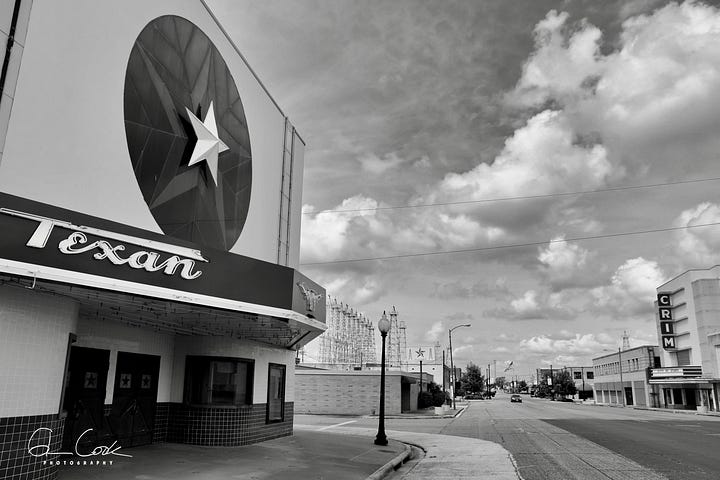
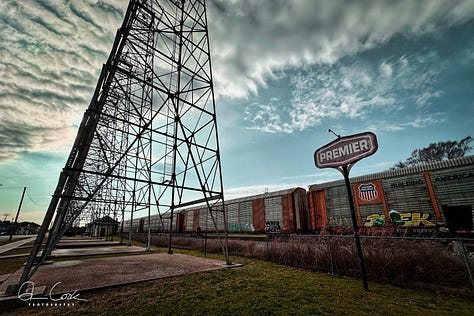
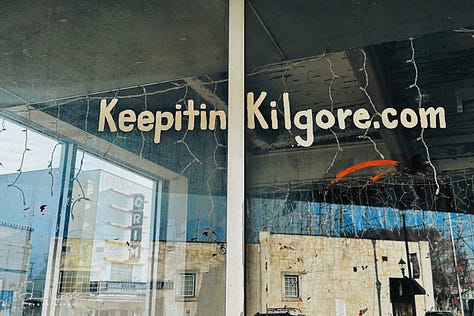
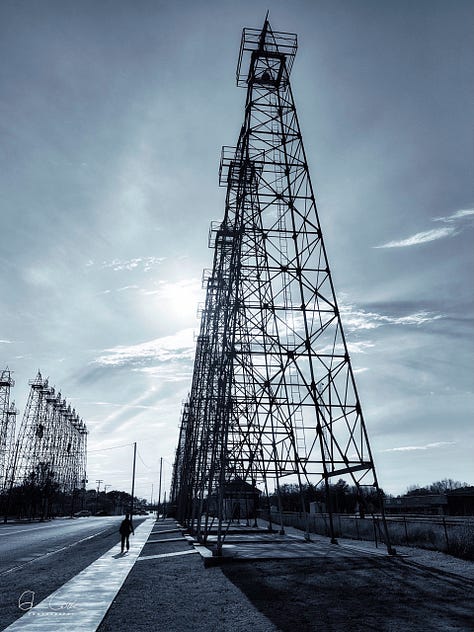

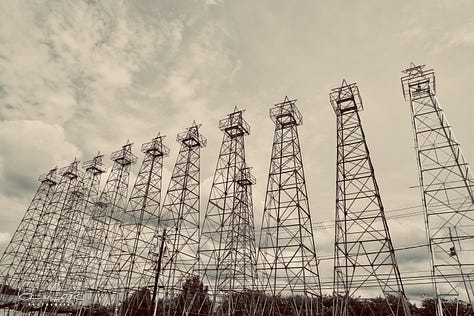
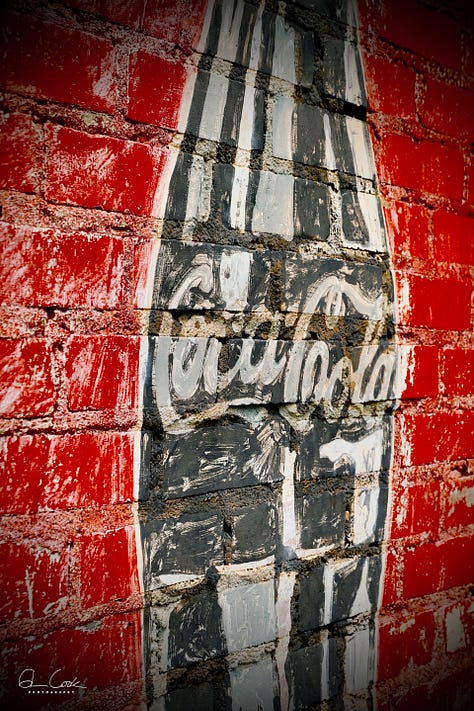
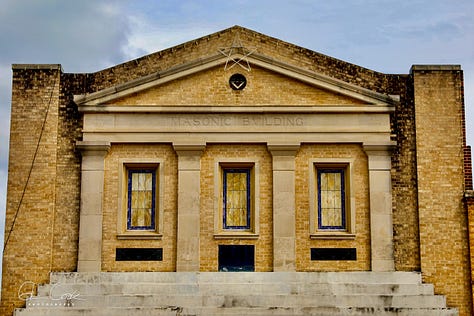

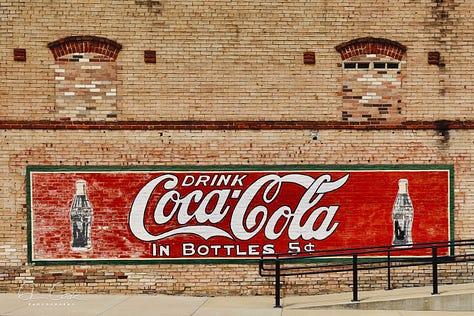
The Rangerettes
Ironically, my maternal grandfather never worked in Kilgore, but it’s a place I’ve heard about all my life. A week after my mom was born more than a month early in August 1941, my grandmother died due to complications from the delivery. Soon after that, the Japanese attacked Pearl Harbor and my grandfather left my mom and uncle with family back in Baird.
My grandfather returned to East Texas post World War II, it was with my mom, uncle and his new wife, Gladys, in tow. Gladys — the name says it all — was a quirky human, and that’s putting it mildly. But she did ensure that my mom took dance lessons as a child.
When mom enrolled at Kilgore College, she joined the Kilgore Rangerettes, the first-ever dance-drill team that was modeled after the Radio City Rockettes. (In case you’re wondering, the name is in honor of the Texas Rangers, the lawmen who helped “clean up” Kilgore when criminals moved into town during the boom.)
Founded in 1939 by Gussie Nell Davis, who served as the group’s director for 40 years, the Rangerettes have performed all over the world and at halftime of the Cotton Bowl for more than 70 consecutive years.
My dad’s friend was trying out to be a Rangerette manager — a position that had to be approved by Gussie Nell personally — and asked my father to join him at the audition. Dad initially did not want to take part but relented when he realized mom was part of the squad.
He passed the audition; his friend did not.
Five years later, my parents were married. Nine months and 20 days later, I came along.
As my mom says, “And that was that.”
Note: One of my goals as a parent has been to take each of my adult children to East Texas to see where my parents grew up. Five years ago, Nicholas visited Longview and Kilgore. Last month, I took Ben on a similar journey that also included a stop in New London, a small town in Rusk County.
These three places, all towns greatly impacted by the Texas oil boom, are full of stories — some personal, some societal. Coming next: Longview and the story of P.O. Box 344.



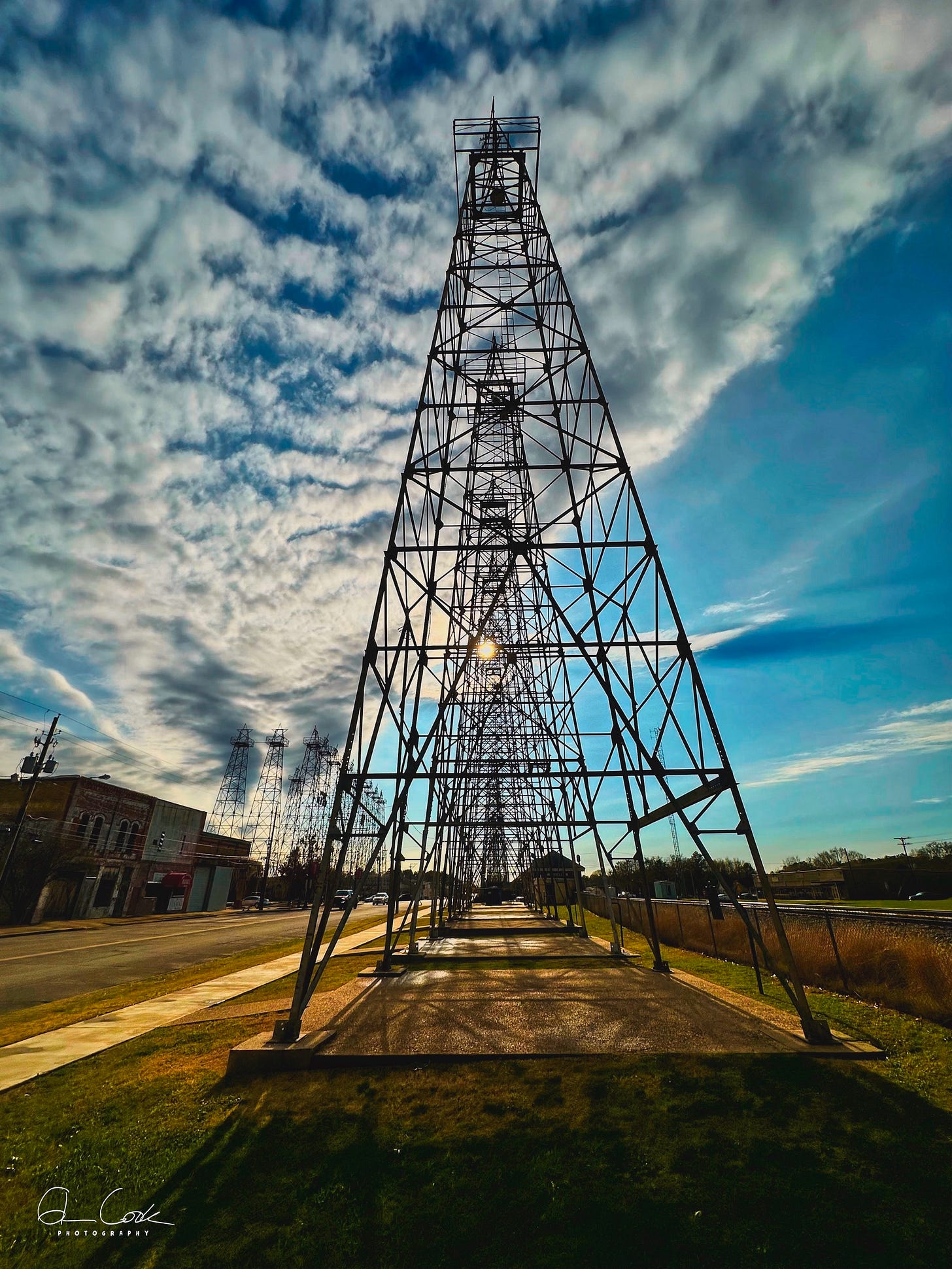
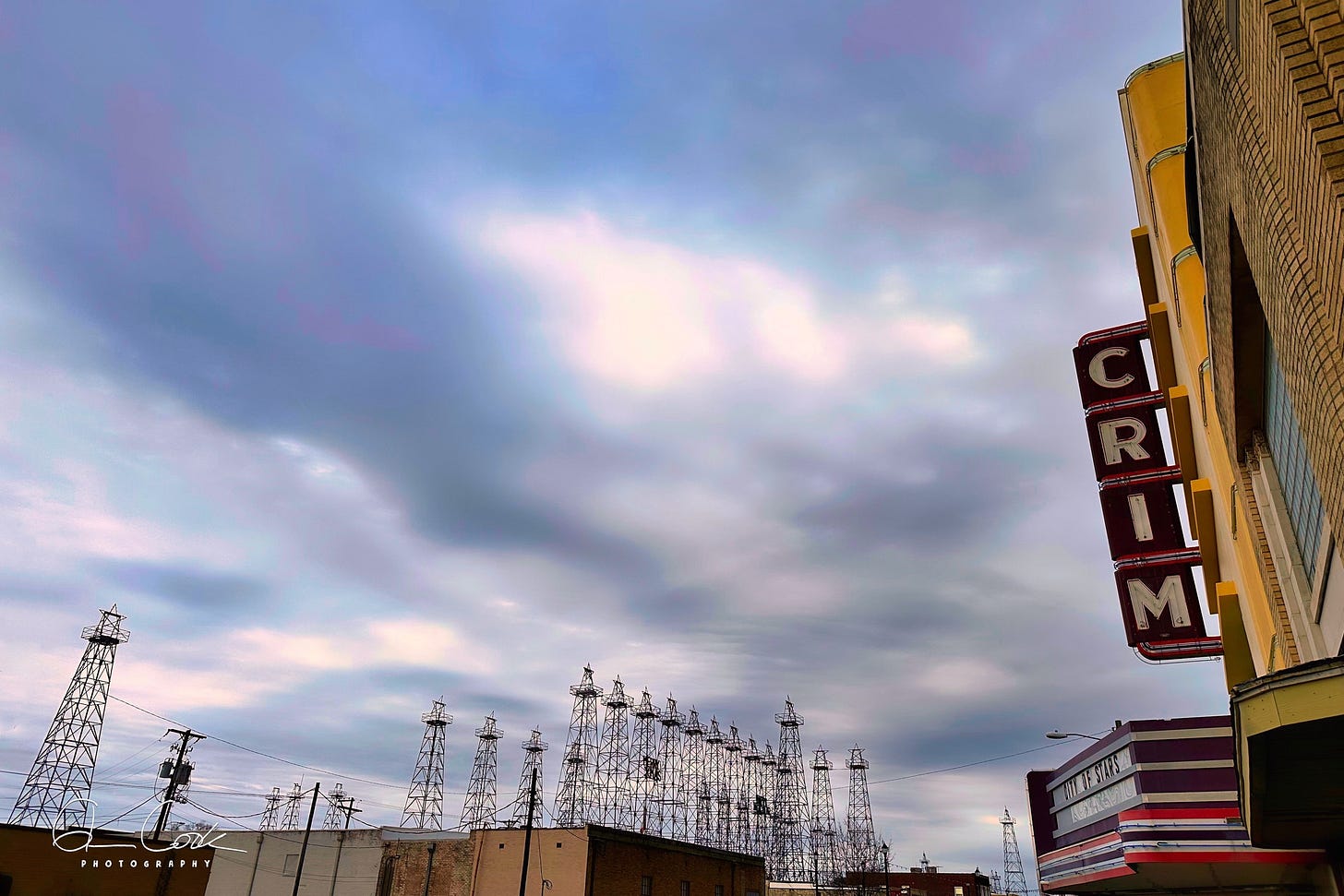
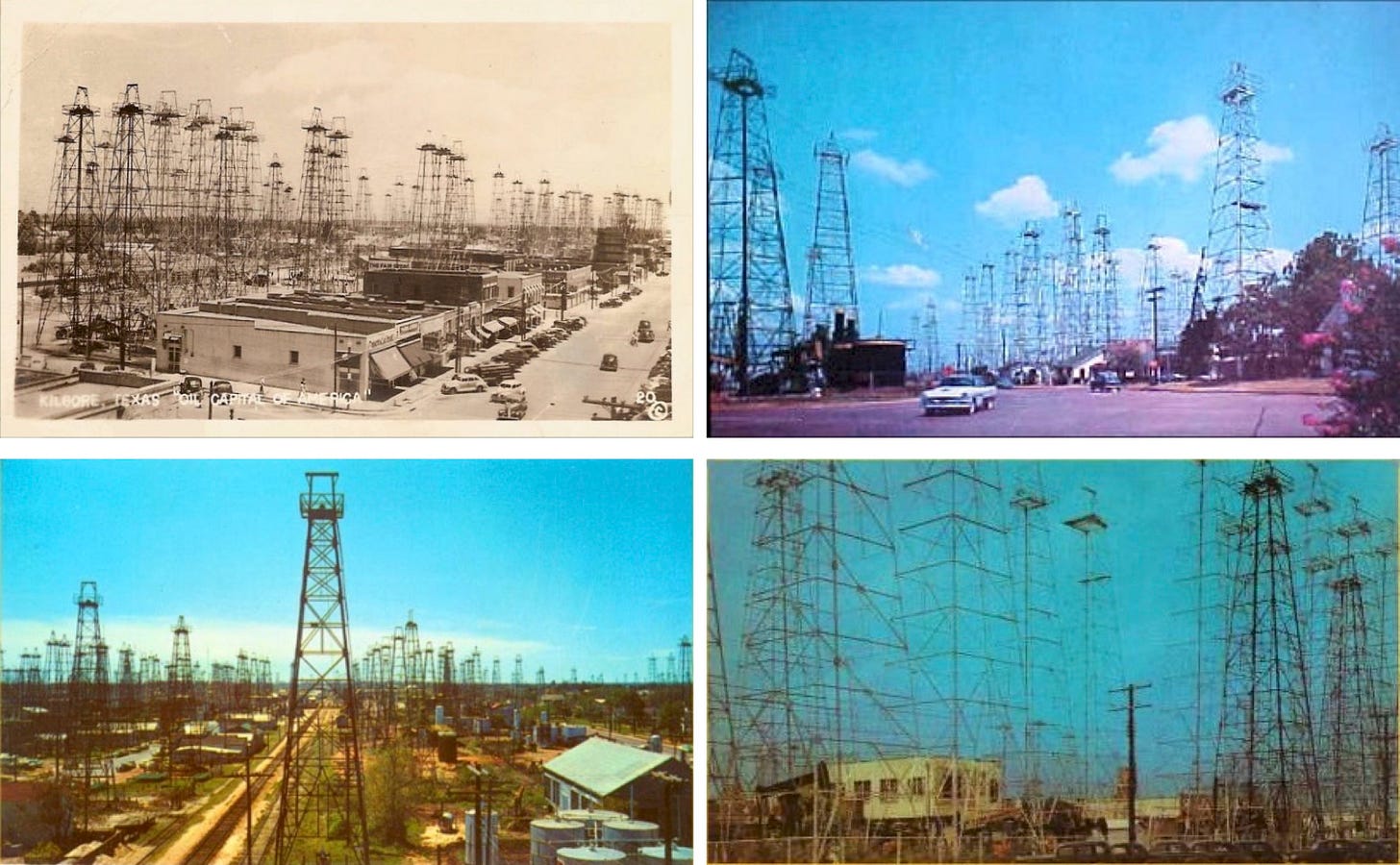
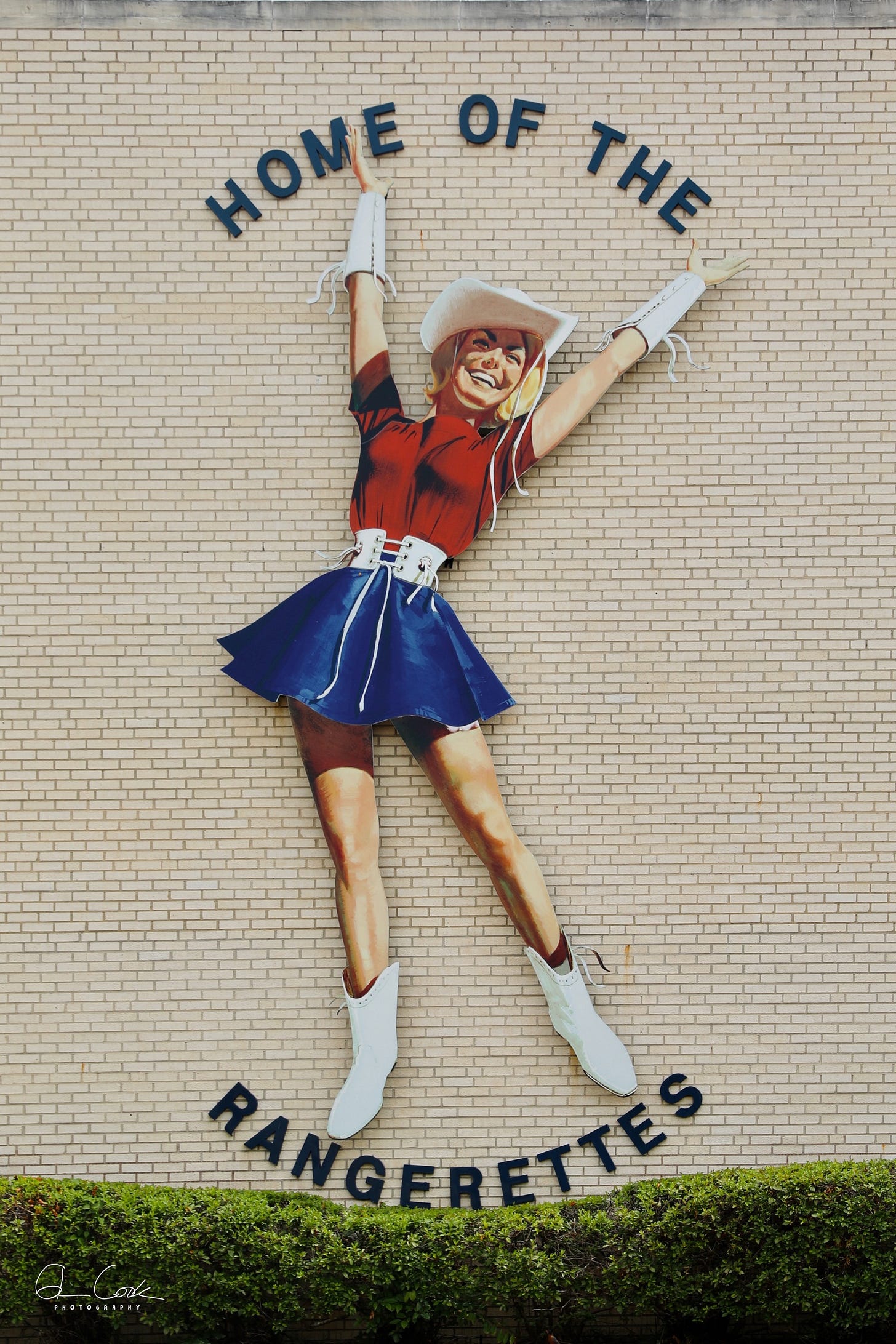
Great story Glenn. I had no idea your mom was a Rangerette. How cool is that? Loved the pictures with the story.
I hope you're finding online places that specialize in collating Texas-history stories---on Reddit, a group on FB or something....some Texas-oriented dot-orgs and the like....somebody somewhere "out there" is collecting personal stories on our state and its people; maybe charge one of the kiddos to web-search places on which to place your stories (not as a 'Stack PR ploy, but a legit personal documentation of "life in this United State"!)
The photos of a downtown filled with oil derricks is at once, stark, stunning, and almost hilarious....as in, "yep, that's Texas," like you'd proudly show a New Yorker or a Los Angeleno!!! It's the vision of a steel forest that provided a living for hundreds and thousands of early East Texans....I think that's the definition of a deep heritage.